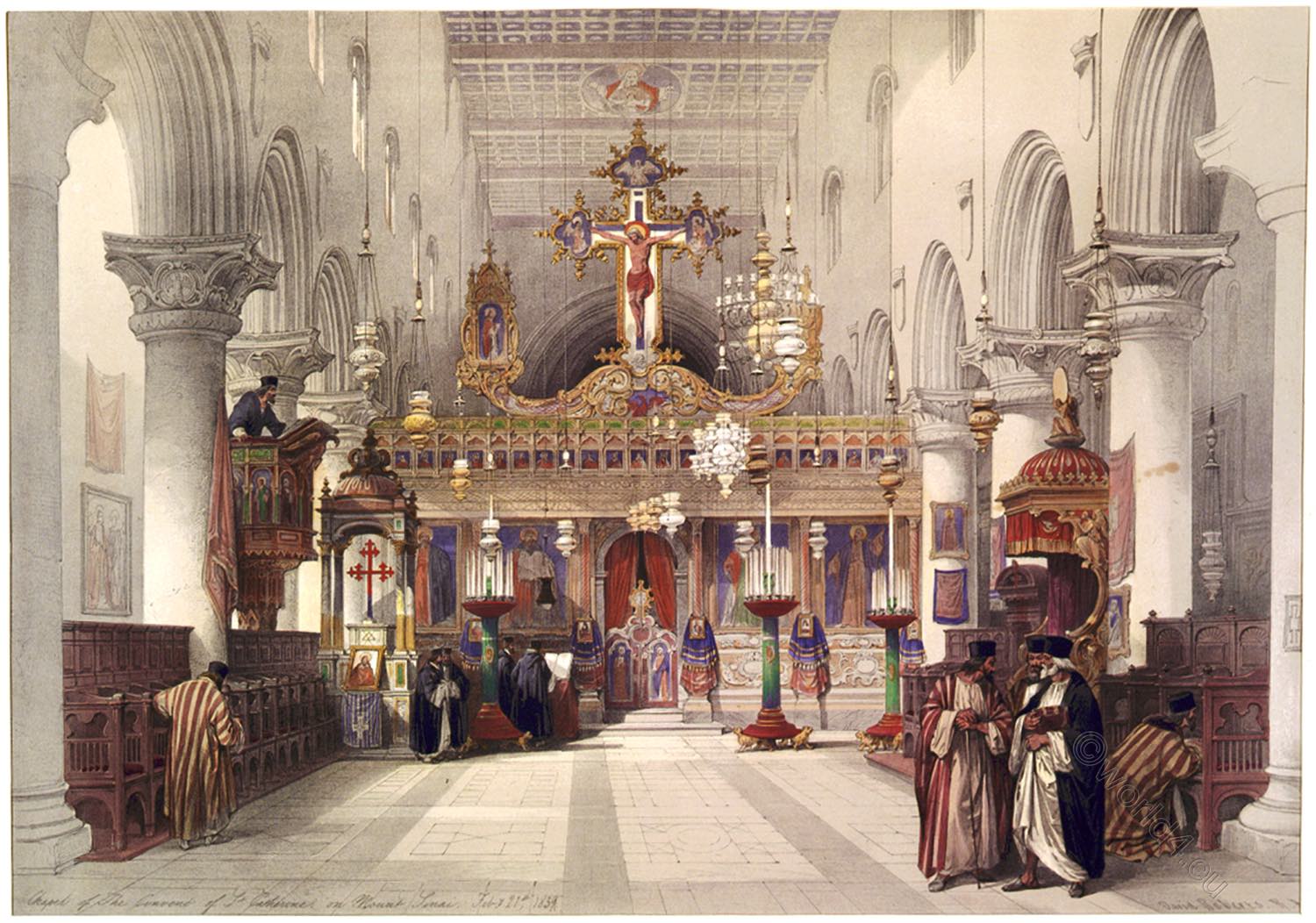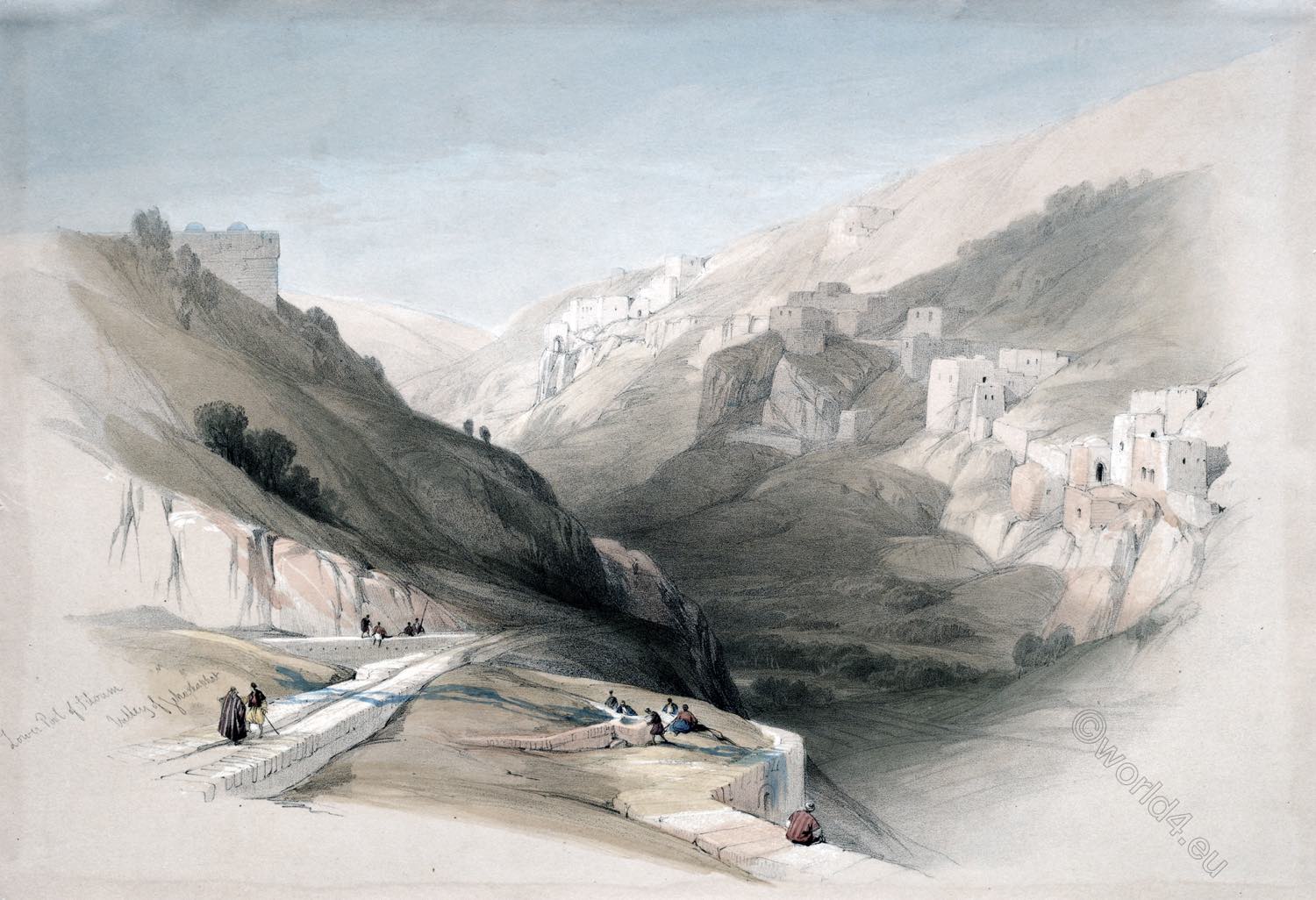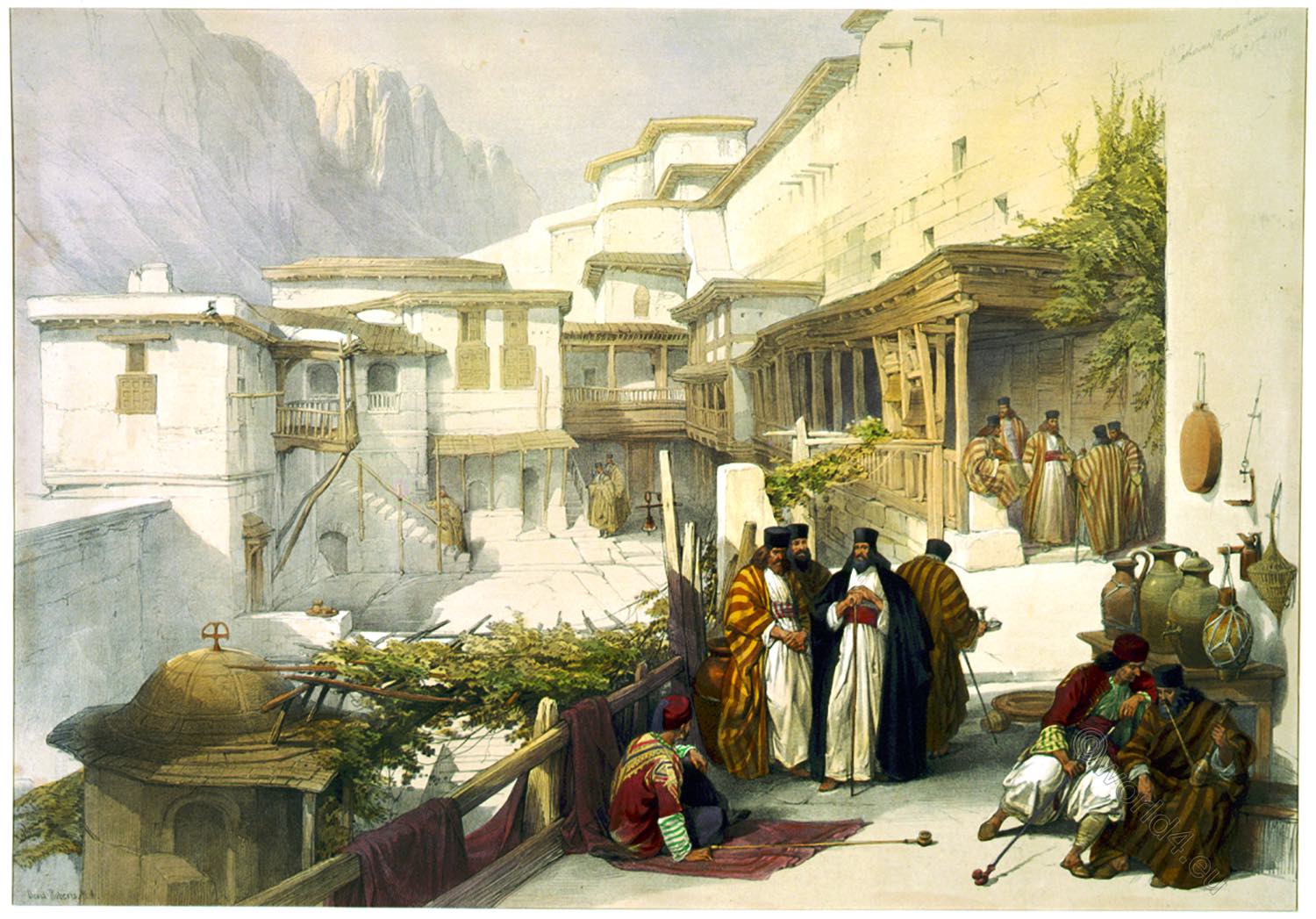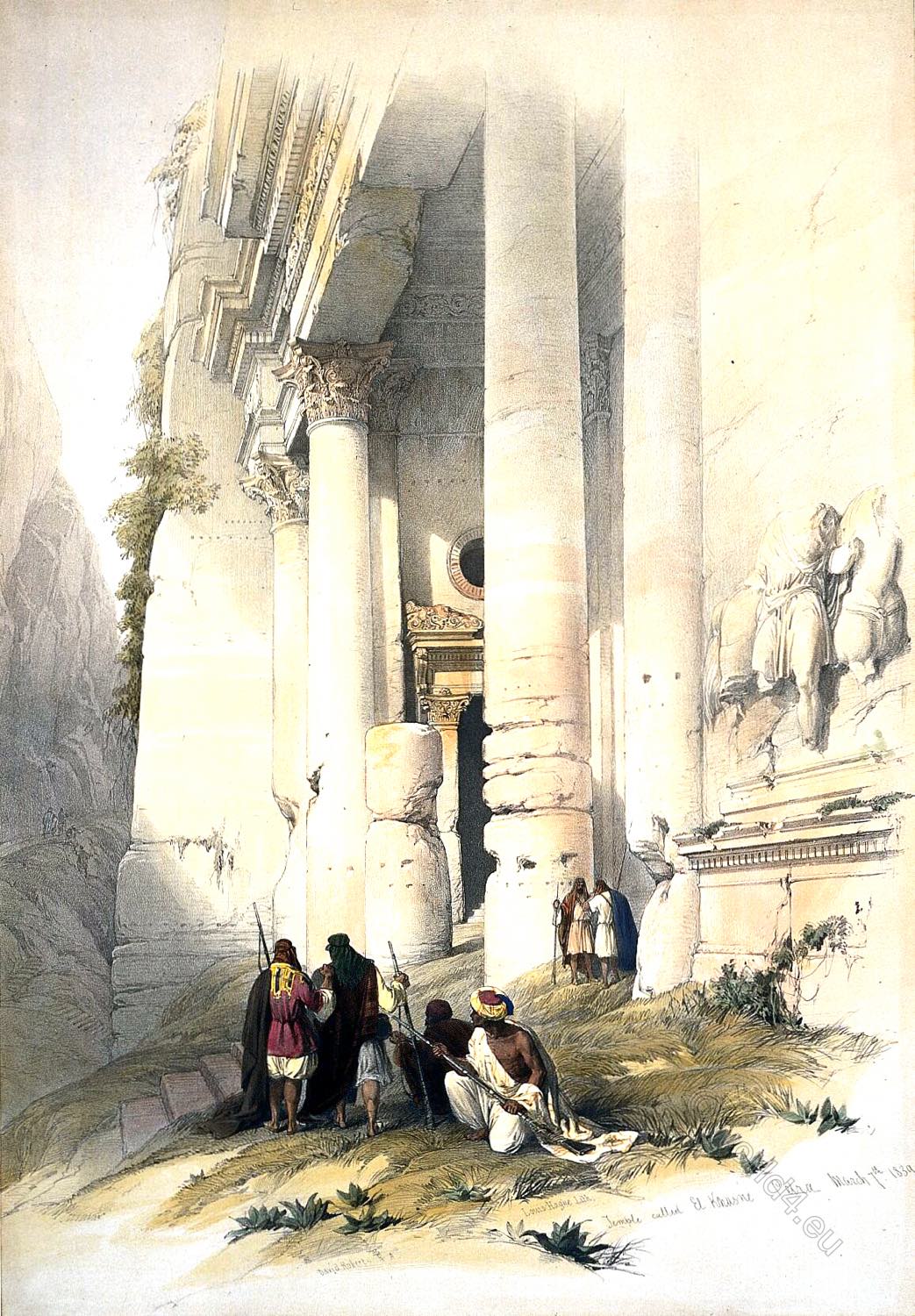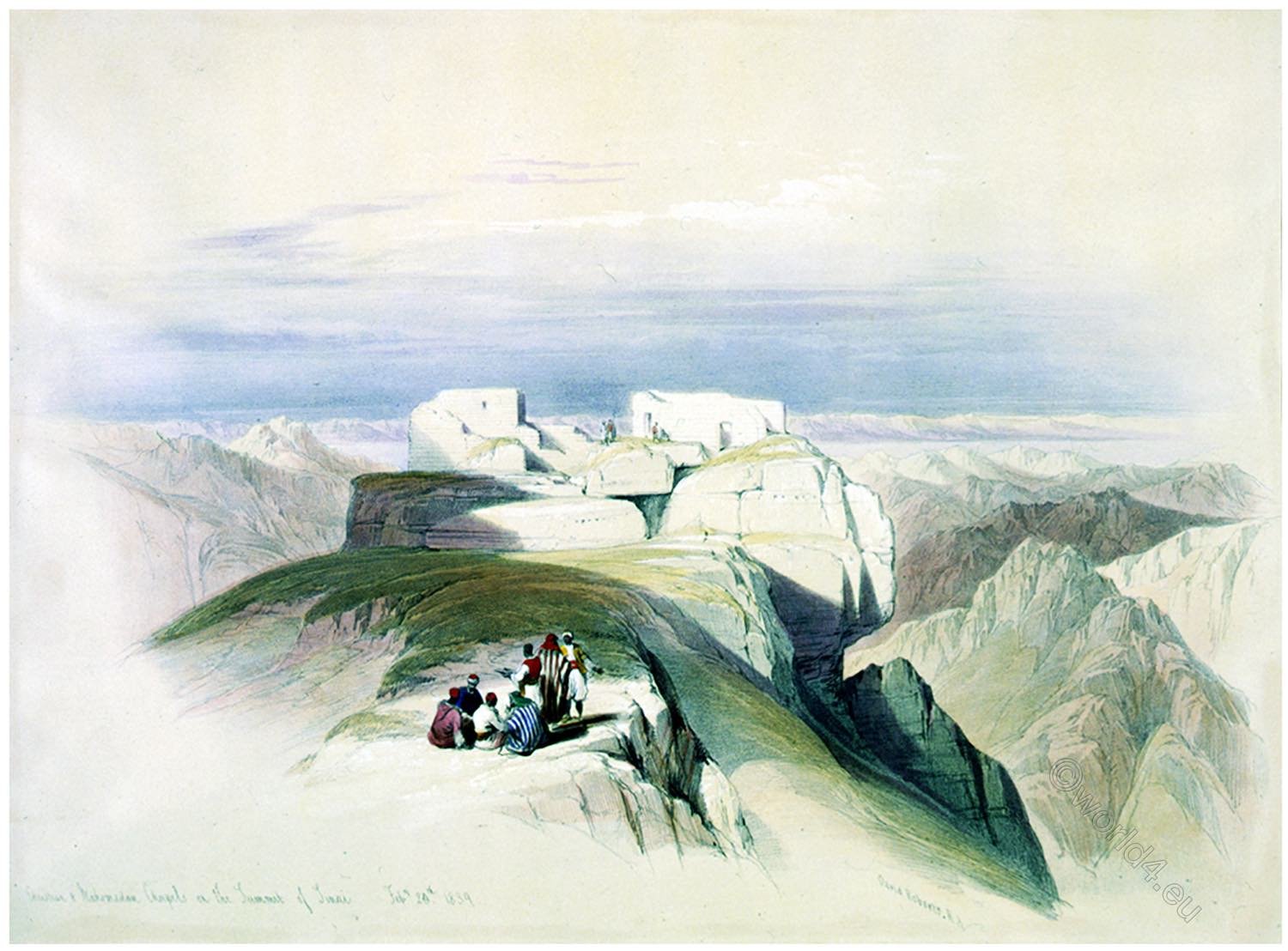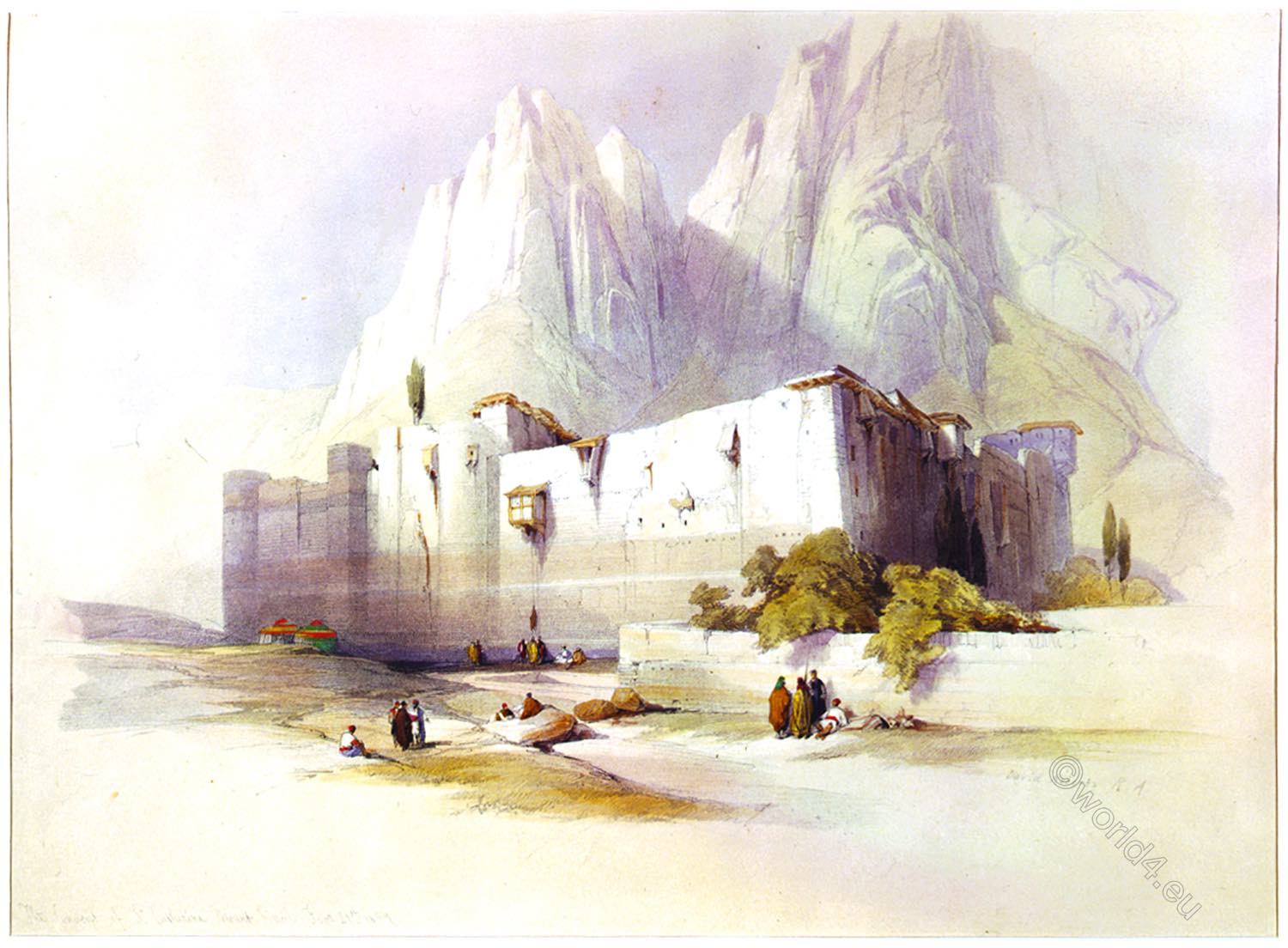
ASCENT OF THE LOWER RANGE OF SINAI
by David Roberts.
The whole career of the Israelites, from the passage of the Red Sea to their entrance into Palestine, was a display of miracle. Yet, such is the Divine adherence to the great law of free agency, that even Miracle was regulated by its action.
The Divine Will might, obviously, at a word have transformed the native stiff-neckedness of the Israelite into perfect obedience, have extinguished his recollections alike of Egyptian enjoyment and Egyptian idolatry, and sent him at once into Palestine as its consecrated possessor.
But those essential results, instead of being the work of Miracle, were left to be the work of Time. The nation was retained in the Wilderness until all the elder race had disappeared in the course of nature; until the recollections of their house, at once of temptation and bondage, had sunk with them into the grave; and until a new people had been formed, knowing no God but Jehovah; trained only by His law, guided only by His presence, and prepared to triumph only in His name.
The Desert then remained a limit to them no more. The same resistless Power which had bound up a whole nation in this sterile and awful place of discipline, threw open its barrier, and the Israelite marched forth invigorated in his frame by the simple life of the Wilderness, and enlightened in his heart by its religion: a new and noble nature, prepared not only to conquer, but to govern; not only to be the lord of Palestine, but to stand forth the model to the world.
This Sketch gives a portion of the Israelite march to Sinai. The scene is thus
graphically described: — “The black and frowning mountains before us, the outworks as it were of Sinai, rose abrupt and rugged from their very base, eight hundred to a thousand feet in height, as if forbidding all approach to the sanctuary within. On the west of the Pass, the cliffs bear the name of Jebel-el-Haweit. …
At 12¾ o’clock, we began gradually to ascend towards the foot of the Pass before us, called by our Arabs Nukb Hâwy (Windy Pass), and by Burckhardt Nukb er-Rahah, from the tract above it. We reached the foot at a quarter past one o’clock, and dismounting, commenced the slow and toilsome ascent along the narrow defile, about S. by E., between blackened, shattered cliffs of granite, some eight hundred feet high, and not more than two hundred and fifty yards apart, which every moment threaten to send down their ruins on the head of the traveller.
Nor is this at all times an empty threat; for the whole Pass is filled with large stones and rocks, the debris of those cliffs. The bottom is a deep and narrow water-course, where the wintry torrent sweeps down with fearful violence. A path has been made for camels along the shelving piles of rocks, partly by removing the topmost blocks, and sometimes by laying down large stones side by side, somewhat in the manner of a Swiss mountain-road.
But although I had crossed the most rugged passes of the Alps, and made from Chamouny the whole circuit of Mont Blanc, I never found a path so rude and difficult as that which we were now ascending. The camels toiled slowly and painfully along, stopping frequently; so that though it took them two hours and a quarter to reach the top of the Pass, the distance cannot be reckoned at more than one hour.” 1)
The Artist says, “After winding through this terrific Pass for about three hours, night closed around ns, before reaching the Plain, at the extremity of which stands the Convent. The effect of the setting sun upon the high peaks which overhung the Pass, whilst the ravine below was enveloped in shadow, was a sight of remarkable beauty.
The pathway which wound up the face of the Mountain, the work of a remote age, and which must have been one of prodigious labour, was now neglected and broken by the mountain-torrents. Other parts were overgrown, and displaced by the roots of the wild plants, which everywhere projected from the cliffs and hollows of the rocks. Huge fragments, which had been loosened by the rains of winter, had rulled down, and choked the narrow pathway, rendering it difficult for our small caravan to thread its course, especially when darkness overtook us.” 2)
1) Biblical Researches, i. 129. 2) Roberts’s Journal.
Source: The Holy Land, Syria, Idumea, Arabia, Egypt, & Nubia, by David Roberts (British, 1796-1864), George Croly, William Brockedon. London: Lithographed, printed and published by Day & Son, lithographers to the Queen. Cate Street, Lincoln’s Inn Fields, 1855.
Continuing
Discover more from World4 Costume Culture History
Subscribe to get the latest posts sent to your email.

